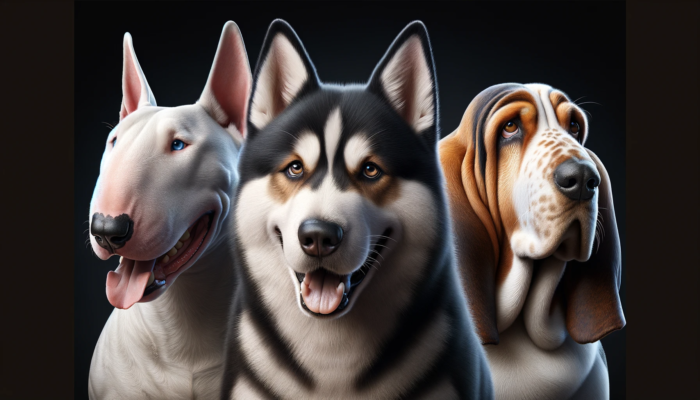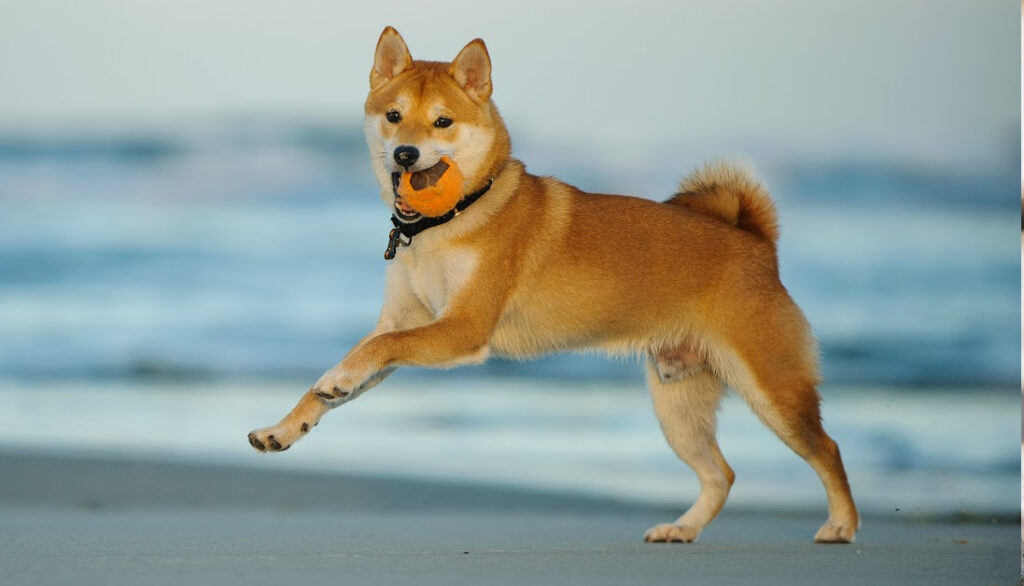Have you ever felt that your furry friend is more hard-headed than adorable at times? You’re not alone! Many pet parents struggle with stubborn dogs who seem to have a mind of their own. And while every canine companion is unique, some breeds are known to be more independent-thinking than others. This is where knowing your dog’s breed characteristics can prove essential.

Stubbornness in dogs is often misunderstood. It’s not that your dog is trying to be difficult on purpose. Instead, this characteristic is more about a dog’s need for self-direction and a strong desire to follow their instincts. Traits like these can make training a bit of a challenge. However, it’s essential to remember that even the most headstrong breeds can learn to follow commands with the right approach.
Knowing what makes a dog stubborn can help you adjust your training methods. Dogs are not stubborn out of defiance or spite, but this behavior often comes down to factors such as breed traits, lack of motivation, or even confusion. For instance, if a command is too complicated or your dog doesn’t see a purpose in performing a certain task, they might appear to be stubborn.
Through this article, we’ll delve into the world of the most stubborn dog breeds. We’ll discuss the characteristic traits of breeds like Siberian Huskies, Beagles, and Dachshunds, renowned for their stubborn streaks. Plus, we’ll share some effective training tips for these independent-minded breeds. Whether you’re considering adopting one of these breeds or are already a proud parent, understanding their unique behaviors can make your journey together even more rewarding.
Remember, patience and consistency are key when dealing with stubborn dogs. Their independent nature isn’t a flaw; it’s just a part of who they are. So, let’s embark on this enlightening journey of understanding our stubborn but lovable furry friends!

What Makes a Dog Stubborn?
Have you ever wondered why your fluffy pal turns a deaf ear to your commands, or why they wander off even when you’re calling them back? If so, you’re on the right track! Let’s dive into the fascinating world of canine behavior to understand what makes certain dog breeds more independent-minded or downright stubborn.
Defining Dog Stubbornness
When we talk about dog stubbornness, what we really mean is a dog’s independence, perseverance, and sometimes, selective hearing. Stubborn dogs are not necessarily disobedient. Rather, they have a mind of their own and prefer doing things in their own way. Often, they want something different than what you’re asking, or they’re just not motivated enough to do what you’re commanding.
Here’s some food for thought: a dog’s ‘stubbornness’ could be their way of communicating with you. Maybe they’re trying to tell you that there’s something they don’t like about the task at hand, or they’re worried or uncertain about what you’re asking them to do.
Factors Contributing to Dog Stubbornness
There are several factors that can contribute to a dog’s stubborn streak:
- Breed: Some dog breeds are naturally more independent and less eager to please their humans. These breeds often fall into the “most stubborn dog breeds” category. They were bred for jobs that required independent decision-making and problem-solving skills, which can sometimes translate into stubborn behavior in a home environment.
- Training: Inadequate or inconsistent training can also result in stubborn behavior. If a dog doesn’t understand what’s being asked of them, or if they’ve been allowed to ignore commands in the past, they’re likely to continue doing so.
- Temperament: Every dog has its own personality. Some are eager to please, while others have an independent streak. Temperament can play a big role in perceived stubbornness.
- Health: If a dog is unwell or in pain, they may refuse to follow commands. What may seem like stubbornness can actually be a sign of an underlying health issue.
- Environment: A dog’s environment can also influence their behavior. Dogs may act stubbornly if they are in an uncomfortable, stressful, or distracting environment.
Understanding these factors can help us find effective ways to communicate with our furry friends, making training more enjoyable and successful for both parties. After all, living with the most stubborn dog breeds doesn’t have to be an uphill battle – with the right approach, you can turn that stubbornness into a strength. So, let’s keep exploring and learning to better understand our independent-minded furry friends.
Identifying the Most Stubborn Dog Breeds
Dog owners often use the term “stubborn” to describe pets who seem to have a mind of their own, and this trait can often be linked back to specific breeds. If you’ve ever felt like you’re having a tug of war with your pup during training sessions, you might have one of the most stubborn dog breeds in your house. Let’s dive into a list of some of these independent-minded furry friends.
- Siberian Husky: Known for their intelligence and striking appearance, Siberian huskies are a popular breed. However, they can also be quite obstinate and are often uninterested in obedience training.
- Beagle: Beagles are infamous for their single-mindedness. They have an outstanding sense of smell and once they catch a scent, it can be challenging to redirect their attention.
- Dachshund: These small dogs with big personalities are often perceived as stubborn. They were bred for hunting, which requires a certain amount of independence and tenacity – traits that can sometimes come across as stubbornness.
- Basset Hound: Another breed with an exceptional sense of smell, Basset Hounds are known for their reluctance to follow commands, primarily when they’re on the trail of an interesting scent.
- Shiba Inu: Independent, strong-willed, and reserved, Shiba Inus are amongst the most stubborn breeds. They require a patient and creative training approach.
Brief Description of Each Stubborn Dog Breed
Now that we’ve identified these most stubborn dog breeds, let’s explore a bit more about each of these breeds and what contributes to their stubborn nature.
Siberian Husky
Originally bred to pull heavy sleds over long distances in harsh climates, Siberian huskies are naturally independent and strong-willed. Their stubbornness often comes from their intelligence and desire to explore and play rather than adhere to strict rules.
Beagle
Beagles, with their remarkable sense of smell, are driven by their noses. Their stubbornness is not so much willful disobedience as it is a single-minded pursuit of fascinating scents. This can often lead to selective hearing when called.
Dachshund
Don’t let their size fool you; Dachshunds are tenacious dogs. This small breed was originally bred to dig into badger dens, and that grit and determination are still seen in Dachshunds today. They are independent, clever, and can be stubborn when they do not see the benefit of the command.
Basset Hound
Basset Hounds are low-energy dogs known to be independent and a bit on the lazy side. Combine that with a keen nose that picks up interesting scents, and you have a dog that can appear incredibly stubborn when they don’t want to be pulled away from a fascinating smell.
Shiba Inu
Shiba Inus are a Japanese breed known for their fox-like appearance and spirited personality. They are intelligent, independent, and can be reserved, even aloof, with strangers. Training a Shiba Inu requires patience and understanding as they can be quite stubborn.
In conclusion, understanding your dog’s breed and inherent traits can help you tailor your training approach. Remember, what might seem like stubbornness might merely be a display of their breed characteristics, and with the right methods, even the most stubborn dog breeds can become obedient and well-behaved pets.
The Siberian Husky: A Case Study
Understanding the Siberian Husky’s Stubbornness
When it comes to most stubborn dog breeds, the Siberian Husky easily ranks high. But before we label this breed as “difficult,” it’s important to understand why they often display stubborn behaviors.
Siberian Huskies, originally bred to pull sleds in harsh Arctic conditions, are known for their resilience and independence. They are incredibly intelligent and capable of making decisions without human input. Their stubbornness largely stems from their strong will and independent nature, which in the past, were crucial for their survival.
Their strong instincts to run and explore are a part of their genetic makeup. When a Husky refuses to come when called or pulls on the leash, it’s not so much a sign of disobedience as it is a manifestation of their innate curiosity and need for exercise.
Training Strategies for Siberian Huskies
Training a Siberian Husky can be challenging, but with the right approach, it becomes manageable and even enjoyable. Here are some useful strategies:
- Start Early: Begin training your Husky as a puppy. It’s easier to teach good habits than to correct ingrained bad ones.
- Consistency: Maintain consistent commands and responses. Changing rules confuse dogs, making them more likely to disregard your requests.
- Positive Reinforcement: Siberian Huskies respond well to rewards. Praise them or give treats whenever they follow a command correctly.
- Exercise: Adequate physical activity is crucial. A tired Husky is a well-behaved Husky. Incorporate walks, runs, or playtimes into their daily routine.
- Patience: Remember, Huskies are independent thinkers. Be patient and persistent with your training efforts.
Although Huskies are among the “most stubborn dog breeds”, they are also incredibly loyal and affectionate. Understanding their behavior and adapting your training approach to suit their needs can help create a strong and fulfilling bond between you and your furry friend. Remember, every Siberian Husky is unique and may not conform exactly to the breed’s general characteristics. Hence, spend time understanding your dog, and adjust your training strategy to suit their individual personality.

The Beagle: A Case Study
When it comes to the most stubborn dog breeds, the Beagle certainly makes the list. Known for their adorable looks and friendly demeanor, Beagles are also famous for their independent and sometimes obstinate nature. But what exactly makes Beagles stubborn, and how can you effectively train them? Let’s delve into that.
Understanding the Beagle’s Stubbornness
Beagles are scent hounds, bred for tracking game in hunting expeditions. This instinctive trait makes them incredibly curious and determined – they will follow a scent relentlessly, often ignoring their owner’s calls. This behavior may be perceived as stubbornness, but it’s actually a manifestation of their innate hunting instincts.
Their stubbornness is also linked to their high energy levels. Beagles are active dogs that require plenty of exercise. If they don’t get enough physical activity, they may become bored, and a bored Beagle can be quite stubborn and destructive.
Training Strategies for Beagles
Training a Beagle can be challenging due to their stubborn streak, but it’s not impossible. Here are some tips to help you:
- Start Early: Begin training your Beagle as soon as you bring them home. Puppies are more receptive to training and can learn commands quickly.
- Positive Reinforcement: Beagles respond well to positive reinforcement. Reward them with treats, praise, or playtime when they follow commands. This will motivate them to listen to you.
- Consistency is Key: Be consistent with your commands and training sessions. Beagles can be forgetful, so regular training is necessary to reinforce the lessons.
- Exercise: Ensure your Beagle gets plenty of exercise to burn off their excess energy. A tired Beagle is a well-behaved Beagle.
- Patient and Persistent: Be patient and persistent. Training a stubborn breed like the Beagle takes time and persistence. Don’t get frustrated if they don’t catch on immediately.
In conclusion, while Beagles are often considered one of the most stubborn dog breeds, understanding their breed characteristics and adopting the right training strategies can help manage their stubbornness. Remember, every dog is unique, and what works for one Beagle might not work for another. It’s all about understanding your furry friend and adapting your training methods to suit their needs.

The Dachshund: A Case Study
Now, let’s turn our attention to another breed that often makes it onto the list of the most stubborn dog breeds– the Dachshund. This small but lively breed is cherished for its playful spirit, yet it’s also known to be notoriously headstrong.
Understanding the Dachshund’s Stubbornness
The Dachshund was originally bred to hunt badgers, a task that required determination, independence, and of course, a good deal of stubbornness. Their stubbornness can be traced back to the need to make independent decisions while on a hunt. These personality traits are still present in the breed today.
Dachshunds are known for their independent streak and determination, which may come across as stubbornness to their owners. They can be resistant to training, particularly if they don’t see the immediate benefit or reward. It’s not that they don’t understand what you want; it’s that they may just not see a good reason to comply!
Training Strategies for Dachshunds
While it’s true that Dachshunds can be stubborn, it doesn’t mean that they are untrainable. Here are some strategies to consider if you’re training a Dachshund:
- Start Early: The sooner you start training your Dachshund puppy, the better. Early socialization and obedience training can help to mitigate stubbornness later on.
- Use Positive Reinforcement: Reward-based training works well with Dachshunds. They’re more likely to obey commands if they know there’s a tasty treat or a favorite toy in it for them.
- Be Consistent: Dachshunds can be quick to pick up on inconsistencies. Ensure all your family members apply the same rules and commands.
- Keep Training Sessions Short and Fun: Dachshunds have a relatively short attention span. Keep training sessions short, sweet, and engaging to hold their interest.
- Patience Is Key: It might take longer than expected to train a Dachshund, given their stubborn nature. But remember, patience and consistency are key when dealing with these independent-minded furry friends.
In summary, while the Dachshund is undoubtedly one of the most stubborn dog breeds, their delightful personalities and enduring loyalty can make the extra training effort worthwhile. With the correct approach, any Dachshund can morph from a stubborn puppy into a well-trained, obedient adult dog.

Training Techniques for Stubborn Dogs
If you’re a dog parent to one of the most stubborn dog breeds, don’t fret! Even the most independent-minded furry friends can learn to follow commands and adapt to your home rules with effective training techniques. Here we’ll dive into some methods that can help you navigate your journey with a stubborn dog.
Effective Training Methods for Stubborn Breeds
When it comes to the most stubborn dog breeds, traditional training methods might not cut it. Here are some unique and proven-effective training strategies:
- Positive Reinforcement: This technique involves giving your dog a reward to reinforce the good behavior. It may be a treat, a favorite toy, or praise. This method helps the dog associate the good behavior with positive outcomes.
- Clicker Training: This is a simple and effective method for stubborn dogs. The clicker makes a consistent sound that your dog quickly learns to associate with positive behavior, making it easier to communicate what you want them to do.
- Smart Use of Leash: For stubborn dogs, a leash is more than just a tool for walks. It can be used to direct your dog’s attention back to you when they get distracted or start showing stubbornness.
- Training in Short Bursts: Stubborn breeds tend to have short attention spans. Keep training sessions short but frequent. This helps to keep their focus and makes training more effective.
Understanding the Importance of Patience and Consistency
Sometimes, dealing with stubborn dog breeds requires a little extra patience. It’s essential not to let your frustrations show during training sessions, as dogs can pick up on your emotions. Instead, stay calm and patient, and remember that progress may be slow, but it’s still progress.
Consistency is another key factor when training stubborn dogs. Dogs learn from repetition and consistency, so it’s important to have clear rules and stick to them. For example, if you don’t want your dog on the couch, make sure to reinforce this rule consistently. Don’t allow them on the couch one day and then reprimand them the next. This can confuse your dog and make it more difficult for them to understand what is expected of them.
Training a stubborn dog breed can be a challenge, but remember that every dog has its unique personality and quirks. With patience, consistency, and the right training methods, you can help your furry friend become a well-behaved member of your family. Remember, understanding your dog’s breed characteristics can make this journey smoother and more enjoyable for both of you.
Recap of the Most Stubborn Dog Breeds
Over the course of this article, we have taken a deep dive into understanding what makes certain dog breeds more stubborn than others. We started with a broad overview – understanding that stubbornness in dogs isn’t necessarily a bad trait, but rather a sign of independence and intelligence. The key is understanding your furry friend’s unique personality traits and adjusting your training methods accordingly.
We explored breeds such as the Siberian Husky, a beautiful and intelligent breed known for their independent streak and sometimes challenging training experiences. Beagles, with their keen sense of smell and curiosity, often follow their noses which can sometimes be interpreted as stubbornness. And who can forget our low-to-the-ground friends, the Dachshunds, who are fearless and bold in spite of their small size, and have a reputation for having a mind of their own.
Final Thoughts on Dealing with Stubborn Dogs
By now you might be realizing that the most stubborn dog breeds also tend to be some of the most interesting and unique. Sure, they may require a little more patience and consistency in training, but isn’t that a small price to pay for the joy and companionship they bring into our lives?
Remember, dealing with a stubborn dog breed doesn’t mean you’re doomed to endless battles of wills. It means you have the opportunity to learn more about your pet’s personality, to understand their unique needs and motivations, and to tailor your training methods to fit them. It might be more challenging, but it’s also incredibly rewarding.
Understanding your dog’s breed and their particular traits is the first step towards effective training. Just remember – patience, consistency, and a good sense of humor can go a long way when dealing with a stubborn pup.
There are no ‘bad’ or ‘difficult’ breeds, only breeds that require different approaches to training. So whether you’ve already brought one of these independent-minded breeds into your home, or you’re considering it, remember to approach the situation with understanding and patience. It’s all part of the wonderful journey of dog ownership.
I hope this guide has given you some new insights into your dog’s behavior and how to work with them, not against them. After all, our stubborn furry friends aren’t trying to make our lives difficult – they’re just being true to who they are.
And isn’t that part of why we love them so much?
Frequently Asked Questions
Q1: What are some of the most stubborn dog breeds?
A: Some of the most stubborn dog breeds include the Siberian Husky, Beagle, Dachshund, and the Jack Russell Terrier.
Q2: What makes a dog breed stubborn?
A: Stubbornness in dogs is often associated with their independence and strong-willed nature. These breeds often have a mind of their own and prefer doing things their way rather than following commands.
Q3: How can I train a stubborn dog?
A: Training a stubborn dog requires patience and consistency. Using positive reinforcement techniques, such as treats and praises, can be effective. It’s also important to start training as early as possible.
Q4: Are stubborn dogs less intelligent?
A: Not necessarily. Stubbornness is not a measure of a dog’s intelligence. In fact, many stubborn breeds are highly intelligent but they simply prefer to think for themselves.
Q5: Can a stubborn dog breed be a good family pet?
A: Yes, a stubborn dog breed can make a great family pet. They often have a lot of personality and can be very loving and loyal. However, they may require more effort in terms of training and socialization.
Dr. Candy, a holistic veterinarian and certified raw dog food nutrition specialist, graduated from Oklahoma State University in 2009 with a DVM and has since specialized in companion animal nutrition, advocating for species-specific diets. With a background in wildlife rehabilitation and oil spill response, she combines holistic health and conventional medicine in her unique approach to treating chronic diseases, allergies, and autoimmune conditions in pets. As the owner of a veterinary practice in Colorado and an author, Dr. Candy is dedicated to educating pet parents and improving the health and happiness of animals.




